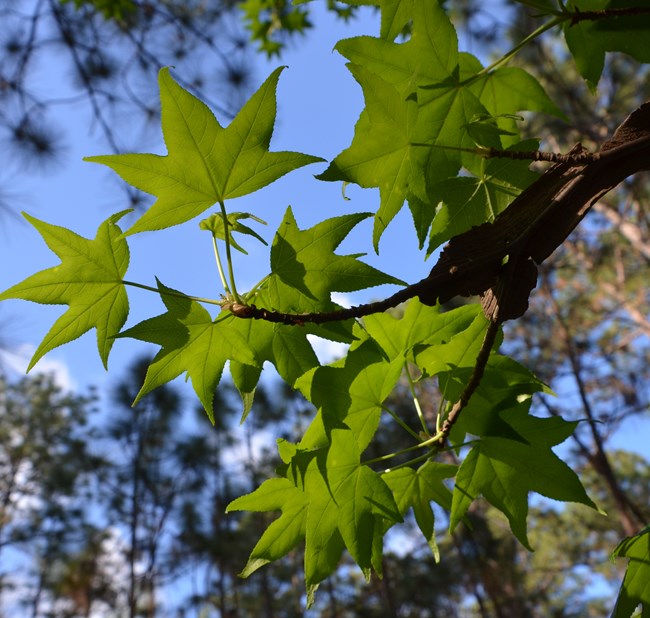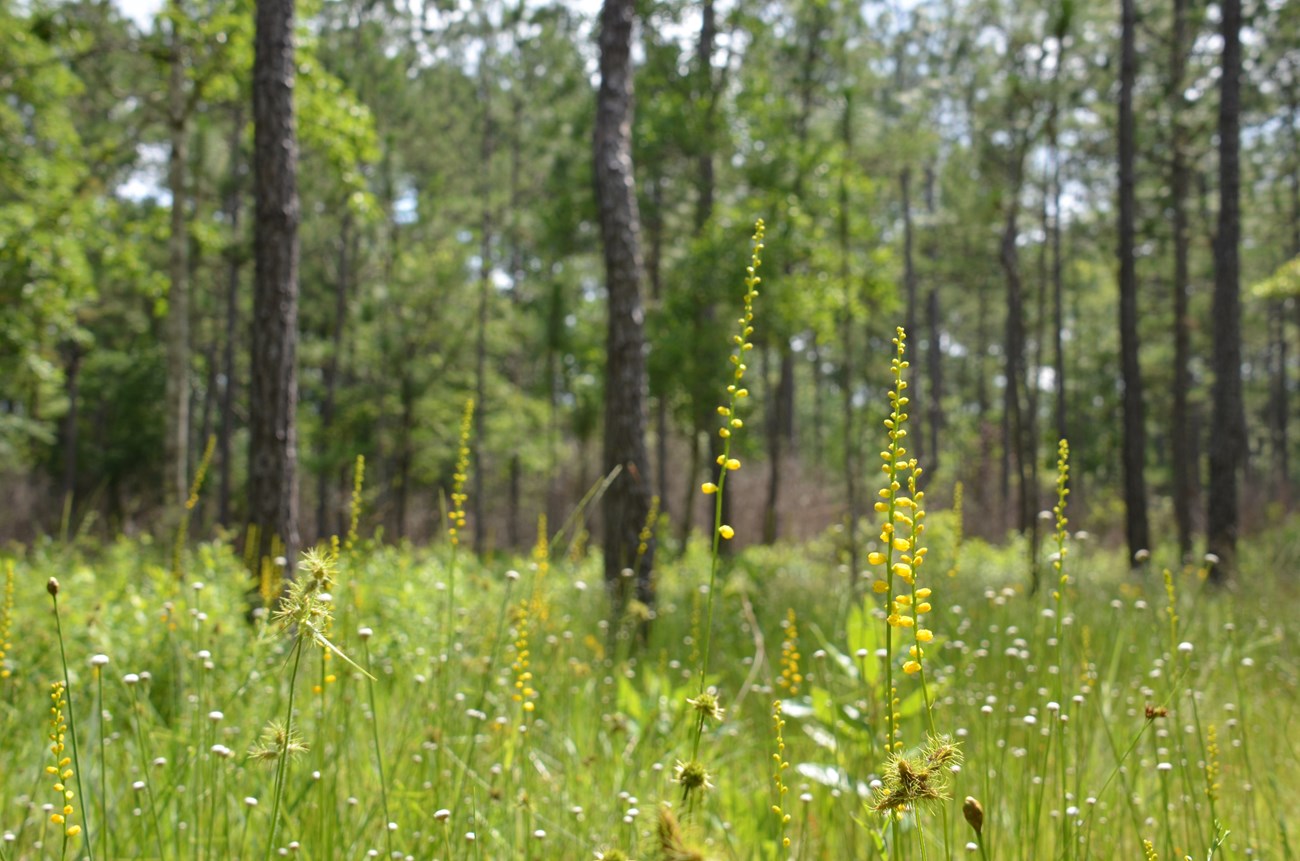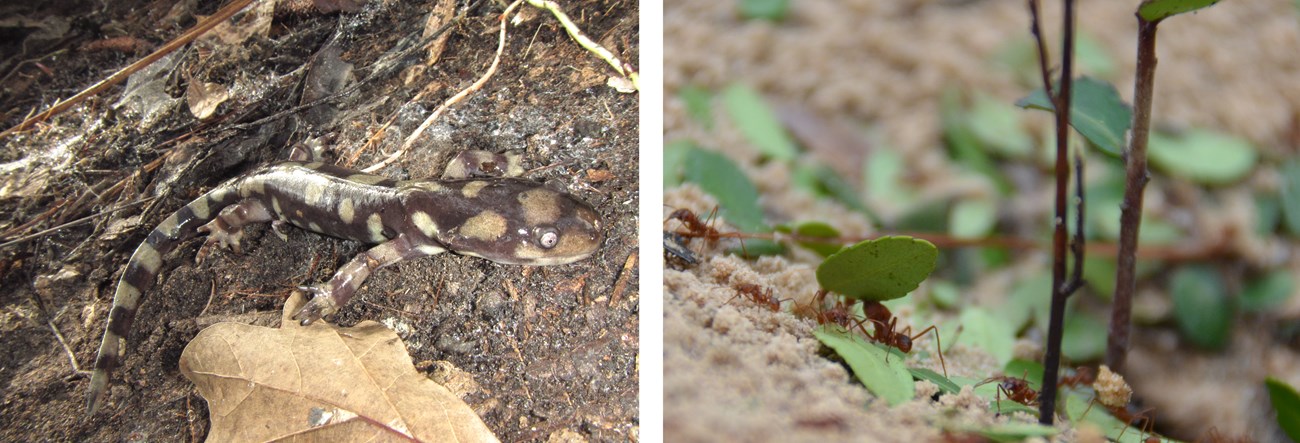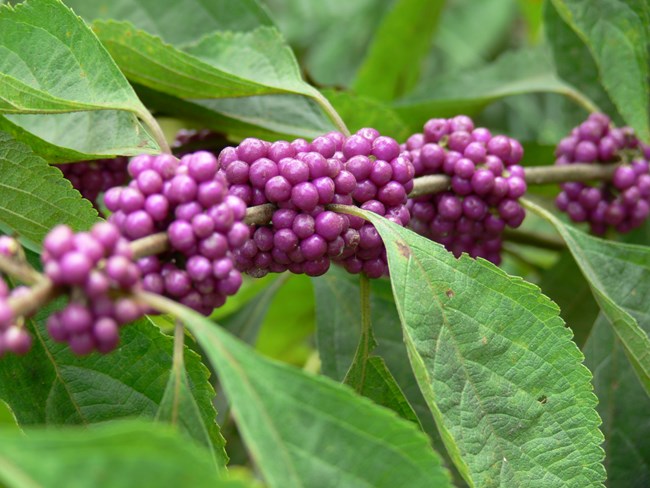
NPS/GULN
Overview
Big Thicket National Preserve was established in 1974, and it consists of nine separate land units and six water corridors north of Beaumont, Texas. The preserve and surrounding area have been described as one of the most diverse regions in North America, due to the convergence of several ecosystems, including eastern hardwood forest, Gulf coastal plains, and Midwest prairies. The preserve itself has been designated an International Biosphere Reserve and as a Globally Important Bird Area. Several urban centers are nearby, including Beaumont and Houston, which can pose threats to park ecosystems by reducing air and water quality, disturbing the surrounding landscape, disrupting hydrology, and bringing in non-native/invasive species. Additional challenges to natural resource conservation in and around the park include logging, oil and gas operations, fragmentation of habitat, and the disruption of the natural fire regime.

Jane Carlson/NPS
Ecosystems at Big Thicket
Big Thicket National Preserve is primarily a forested park intermixed with relatively open pine savannahs, woodlands and aquatic habitats. There are several classes of forested upland ecosystems, including pine sandhill, upland pine forests, upper slope pine oak, mid-slope oak pine, lower slope hardwood pine, flatland hardwood pine and flatland hardwood. These varied forest types are home to many birds, mammals, amphibians and insects, including some records (past or present) of at-risk species like the Red-Cockaded Woodpecker and the timber rattlesnake. There are even historical records of the probably-extinct Ivory-billed Woodpecker in Big Thicket forests.
Areas of the park where the canopy is relatively open (25-60% canopy closure) are called savannahs or woodlands. Most commonly, these have an overstory of dispersed longleaf pine (Pinus palustris) and/or loblolly pine (Pinus taeda), with occasional sweetgum (Liquidambar styraciflua) or blackgum (Nyssa sylvatica ssp. biflora). These plant communities are also characterized by a species-rich understory of grasses, sedges and forbs, with wildflower display throughout much of the year. There are upland portions as well as wetter areas called pine savannah wetlands or wet flatwood pine savannahs. Frequent fires are essential for the persistence of pine savannah plant communities, and in some areas of the park, these habitats are being actively restored and managed with prescribed fire.

NPS/Jane Carlson
Nearer to streams, rivers, seeps, or on poorly drained soils, there are many types of freshwater wetlands, both forested and unforested. The stream or river floodplain forests –subject to occasional flooding—can contain a broad mix of tree and shrub species, including sweetgum, tupelo species (Nyssa spp.), water hickory (Carya aquatica), oak species (Quercus spp.), bald cypress (Taxodium distichum), hawthorn (Crataegus spp.), and dwarf palmetto (Sabal minor). The cypress-tupelo swamps, in contrast, are flooded for longer periods of time and support only the most flood-tolerant tree and shrub species. Baygalls are another type of forested wetland in the park, and they are characterized by species-rich tree, shrub, and herbaceous layers created by local mound-and-intermound relief. Finally, there are freshwater wetlands with relatively few or no trees, including marshes, acid bogs and pine savannah wetlands with orchids, pitcher plants (Sarracenia spp.) and sundews (Drosera spp.).
The dominant aquatic ecosystem at Big Thicket NP is the Neches River and its tributaries, including Pine Island Bayou, Turkey Creek, Beech Creek, Hickory Creek, Village Creek and Big Sandy Creek. There are also several lakes within the park, and the Beaumont Unit includes portions of the Neches River both above and below the river’s saltwater barrier.

photos by Billy Finney/NPS (right) and Chris Adams (left)

GULN/NPS
Vital Signs Monitored at Big Thicket NP
The Gulf Coast Network monitors three indicators of ecological health —called vital signs — at this park. They are:
Source: NPS DataStore Saved Search 3712. To search for additional information, visit the NPS DataStore.

Photo by Chris Adams
Last updated: March 24, 2024
